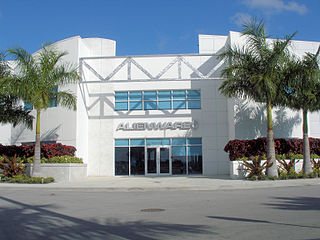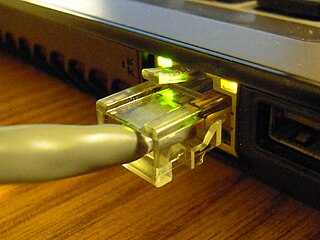Radio controlledcars are battery/gas-powered model cars or trucks that can be controlled from a distance using a specialized transmitter or remote. The term "R/C" has been used to mean both "remote controlled" and "radio controlled", where "remote controlled" includes vehicles that are connected to their controller by a wire, but common use of "R/C" today usually refers to vehicles controlled by a radio-frequency link. This article focuses on radio-controlled vehicles only.

In cryptography, RC6 is a symmetric key block cipher derived from RC5. It was designed by Ron Rivest, Matt Robshaw, Ray Sidney, and Yiqun Lisa Yin to meet the requirements of the Advanced Encryption Standard (AES) competition. The algorithm was one of the five finalists, and also was submitted to the NESSIE and CRYPTREC projects. It was a proprietary algorithm, patented by RSA Security.
Instructional scaffolding is the support given to a student by an instructor throughout the learning process. This support is specifically tailored to each student; this instructional approach allows students to experience student-centered learning, which tends to facilitate more efficient learning than teacher-centered learning. This learning process promotes a deeper level of learning than many other common teaching strategies.

R is a programming language and free software environment for statistical computing and graphics supported by the R Foundation for Statistical Computing. The R language is widely used among statisticians and data miners for developing statistical software and data analysis. Polls, data mining surveys, and studies of scholarly literature databases show substantial increases in popularity in recent years. as of March 2019, R ranks 14th in the TIOBE index, a measure of popularity of programming languages.

The Honda VF and VFR series is a range of motorcycles first introduced in 1982 by Honda featuring V4 engines.

The Canadair CT-114 Tutor was the Royal Canadian Air Force (RCAF), and later Canadian Forces, standard jet trainer, between the early 1960s and 2000. Designed and built by Canadair, it was ordered in September 1961.

Alienware is an American computer hardware subsidiary of Dell. Their products are designed for gaming and can be identified by their alien-themed designs. Alienware was founded in 1996 by Nelson Gonzalez and Alex Aguila. The company's corporate headquarters is located in The Hammocks, in Miami, Florida.

The HP 9800 was a family of what were initially called programmable calculators and later desktop computers made by Hewlett-Packard, replacing their first HP 9100 calculator. It is also named "98 line". The 9830 and its successors were true computers in the modern sense of the term, complete with a powerful BASIC language interpreter.

Code::Blocks is a free, open-source cross-platform IDE that supports multiple compilers including GCC, Clang and Visual C++. It is developed in C++ using wxWidgets as the GUI toolkit. Using a plugin architecture, its capabilities and features are defined by the provided plugins. Currently, Code::Blocks is oriented towards C, C++, and Fortran. It has a custom build system and optional Make support.

Ohio Scientific Inc. was an Ohio-based computer company that built and marketed microcomputers from 1975 to 1981. Their best-known products were the Challenger series of microcomputers, but they also sold a variety of computer kits, single-board computers and various peripherals.
On Microsoft Windows, a special folder is a folder which is presented to the user through an interface as an abstract concept instead of an absolute folder path. Special folders make it possible for any application to ask the operating system where an appropriate location for certain kinds of files can be found; independently of which version or user language of Windows is being used.
Selenium is a portable framework for testing web applications. Selenium provides a playback tool for authoring functional tests without the need to learn a test scripting language. It also provides a test domain-specific language (Selenese) to write tests in a number of popular programming languages, including C#, Groovy, Java, Perl, PHP, Python, Ruby and Scala. The tests can then run against most modern web browsers. Selenium deploys on Windows, Linux, and macOS platforms. It is open-source software, released under the Apache 2.0 license: web developers can download and use it without charge.
In some operating systems vol is a command within the command line interpreters (shells) such as COMMAND.COM and cmd.exe. It is used to display the volume label and volume serial number on a logical drive, such as a hard disk partition or a floppy disk, if they exist.
The Slavic liquid metathesis refers to the phenomenon of metathesis of liquid consonants in the Common Slavic period in the South Slavic and West Slavic area. The closely related corresponding phenomenon of pleophony occurred in parallel, in the East Slavic languages.
Online tutoring is the process of tutoring in an online, virtual environment or networked environment in which teachers and learners are separated by time and space. Online tutoring, as a reflection of the diversity of the wider Internet, is practiced using many different approaches and is addressed to distinct sets of users. The distinctions are in online content and interface, as well as in tutoring and tutor-training methodologies. Definitions associated with online tutoring vary widely, reflecting the ongoing evolution of the technology, the refinement and variation in online learning methodology, and the interactions of the organizations that deliver online tutoring services with the institutions, individuals, and learners that employ the services. This form of Internet service is a classical micropublishing situation.
HP Mini is a former line of small notebooks, categorized as netbooks manufactured by Hewlett-Packard under the HP brands. They either contained a custom version of Ubuntu Linux, Microsoft Windows XP Home Edition or Windows 7 Starter operating system. Like most netbooks, they were not built with CD/DVD drives. However, HP did sell portable DVD-ROMs with HP's LightScribe disc imaging software. These netbooks are best used for written documents, small programs and web browsing. They can run standard software, but given their low price, they tend to have low end specifications, causing poor performance. They were marketed from mid-2007 through 2012.

GNOME Calculator, formerly known as gcalctool, is the software calculator integrated with the GNOME desktop environment. It is programmed in C and Vala and part of the GNOME Core Applications.












